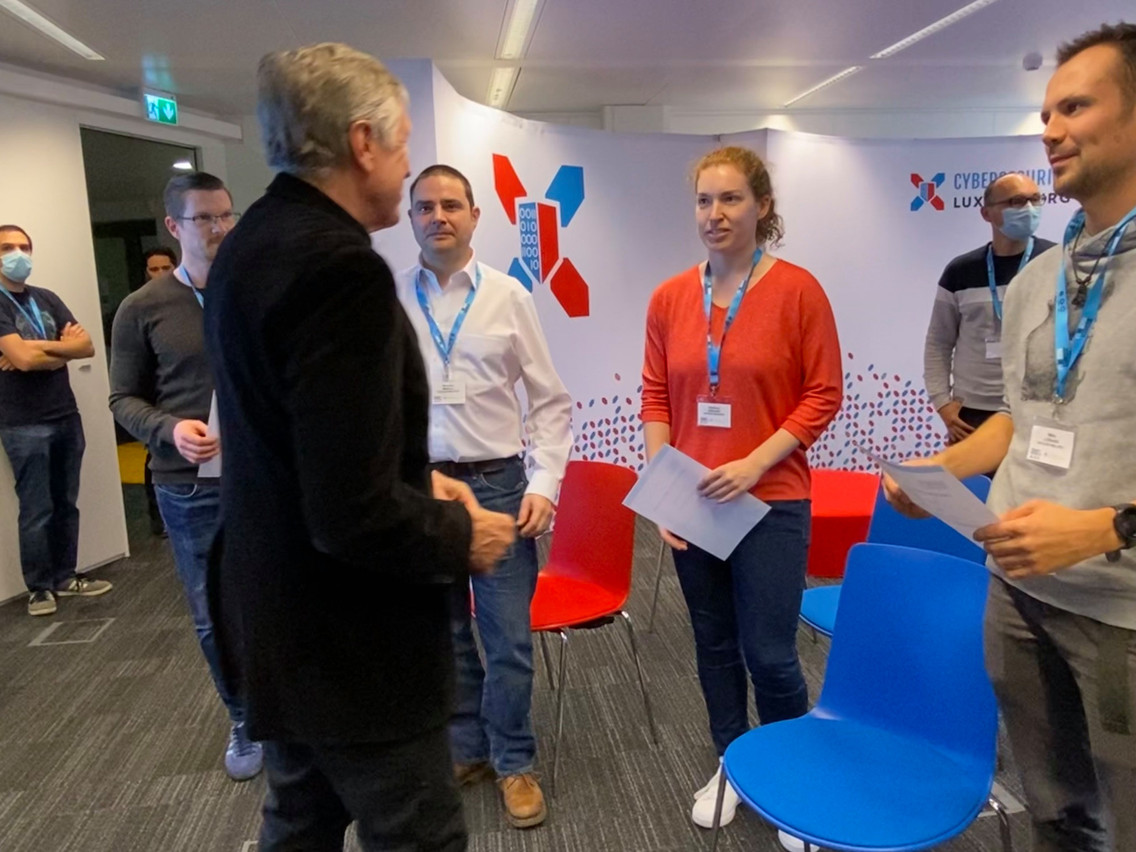The smiles on the faces of the soldiers freeze. With just one minute to go, the GovCert cyber security team is beating military and civilian personnel from Nato, the European Commission and cybersecurity company Excellium in the first training exercise at the Luxembourg cyber range, a virtual training environment for digital attacks, hosted at the Cybersecurity Competence Center (C3). In cyber warfare nothing is decided until the game is over.
Sitting in the front row, the army’s chief of staff, general Steve Thull, makes light of the outcome.
“A young woman whom we welcomed to Diekirch for her master’s degree has joined the GovCert team, a symbol that the military and civilians work together perfectly in the field of cyber security,” he says.
The young woman, well versed in coding, refused any interview. Even if the teams agree to be photographed, there was taking of their names at the press event on 20 October. “That automatically makes them targets,” says an expert.
Estonian technology
The training will be given more and more regularly to the military. The army has three of these highly trained profiles in its cyber defence cell in Diekirch and two others in GovCert, the institution in charge of the cyber security of critical installations and state administrations. And it is already looking for three others to gradually increase its capacity.
The fifteen or so people--including one woman--who took part in this first exercise in Luxembourg had to respond to a series of challenges in three phases. Each problem solved brings points. The winner wins, the losers learn. As the ministry’s cyber defence expert Ben Fetler explains: “They had to find, for example, the code for malware in a computer code.” A modern version of the needle in the haystack.
The cyber range forms part of a ten-year presented in February. “Society is becoming increasingly digital, which has many advantages but also presents more and more risks. We need to train these experts who will know how to protect us,” Bausch said. “The cyber range is like a flight simulator for pilots. It helps with training, getting used to dealing with all scenarios and testing the defence processes already in place.”
The platform is based on technology from the Estonian company Cybexer. “They won the tender from the Nato Support and Procurement Agency,” the minister explained. The NSPA organised the acquisition and is hosting the range at one of its data centres.
For Thull, “it’s about winning the war before the war,” he said. “We need to work on resilience, bringing teams and systems up to speed. But it goes far beyond the kinetic dimension; in tactical teams there are other functions. For example, if an attack is on a medical facility, if it poses a public health problem, problems for patients, we must be able to deal with it with authority and organisation, in collaboration with our neighbours. In a calm manner. Planning without stress.”
This story was first published in French on . It has been translated and edited for Delano.
